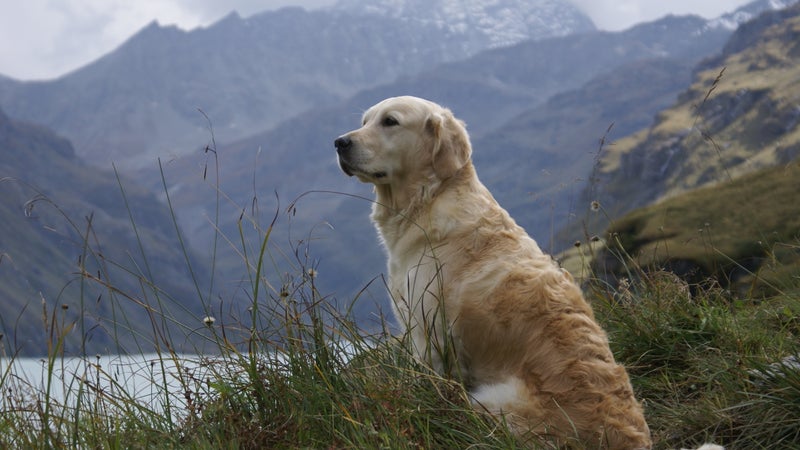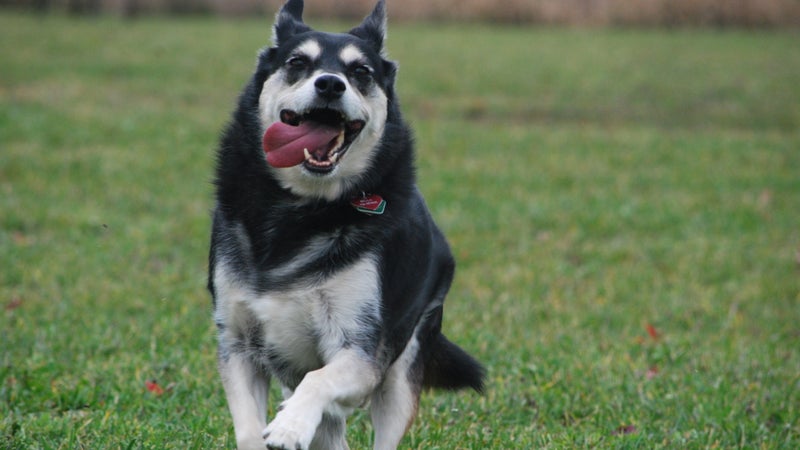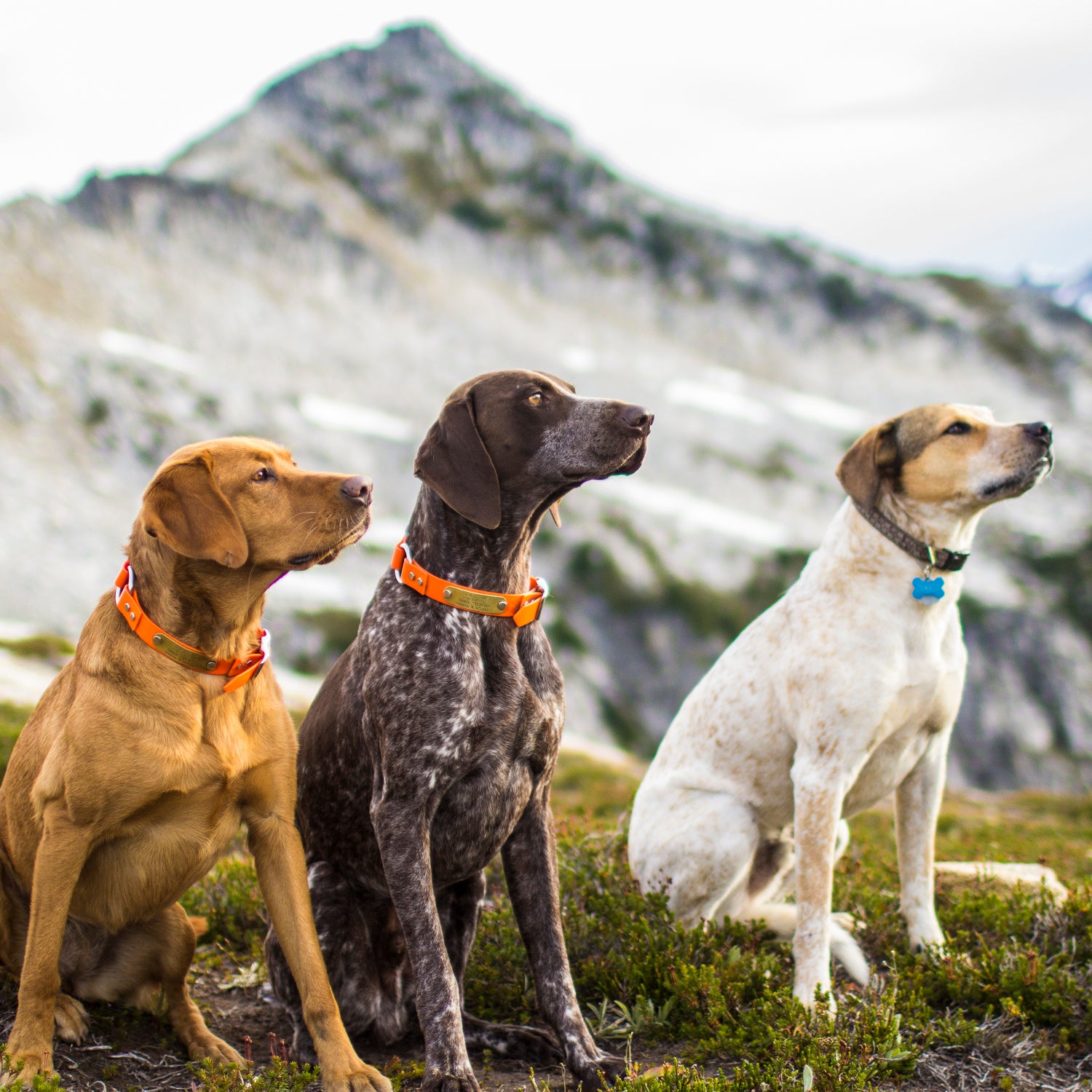About 12,000 years ago, canines came to the fire.
Before long, humans and dogs became very close friends. No one can say exactly where it happened, though it was likely in southern Europe or North Africa. But the terms of the arrangement were simple: The two species would look after one another. Dogs would sniff out and run down game as well as guard the homefront. Man would offer food and shelter. Neither would be lonely.
Since then, it’s been man who most often fails to live up to the bargain—not by skimping on kibble, but by allowing his dog to become a do-nothing layabout or even a nuisance. The idea of a dog as purely pet is a 20th-century concept and, frankly, a bad one. Of course, I’m not telling anyone anything they don’t already know: Dogs like daily order and work. Hell, they need it. If you’re not willing to give a dog a job, whether it’s running with you, sitting calmly while you fish, or running behind you while you ski, you should probably stick to having goldfish—or ferns.
But if you’re ready to dedicate time to training a dog that’s up for adventure, then we’ve got the drill sergeant you need. Mike Stewart, 58, is a former police officer—he spent seven years on the force in Oxford, Mississippi, then 18 years as chief of campus police at the University of Mississippi—who’s been “piddling around” training dogs since he was a young man. Today, he is widely regarded as one of the best dog trainers in the world. He breeds, trains, and sells British Labradors out of his Wildrose Kennels, a lovely and well-tended farm on 143 acres of fields, ponds, and woods outside Oxford. Stewart’s new book, The Wildrose Way, details how you and your dog can be better in tune with each other in all sorts of situations, from boating to snowshoeing to birding—even just walking along Fifth Avenue in New York. While he trains everything from hunting dogs to diabetic alert dogs, Stewart’s favorite pastime these days is training adventure dogs.
My wife and children and I trained service dogs for about two years. (It was my daughter’s idea; among the many benefits of the work, she got a great college essay out of it.) I recently returned from a visit with Stewart at Wildrose. While his book goes into great depth, these are some of the principles he uses to help a pup grow into a finished dog.
Pick the Right Breed

“If you’re living in a small apartment in a big city and working long hours, even if your dad had German shorthaired pointers all the time when you were growing up, that’s still the wrong dog for your situation,” Stewart says. “Know who you are and what you want from a dog. Consult professionals. Malamutes are born to run, hounds are bred to track and bay, and Jack Russells to burrow. Labs do well in cold water but shed and, if untrained, will carry your socks and shoes around. Breed traits will crop up whether you’re going to the pound or the fanciest kennel out there.”
Give ’Em His Own Home
Contrary to what you might think, a dog crate is nothing like a cage. It’s a safe haven where your dog can get some peace and quiet. Every time you put your animal into its crate, you should reinforce the action by looking the dog in the eyes, saying its name, opening the crate door, and saying “crate.” Treat the dog as it goes in. A dog that crates well is a dog that travels well and learns how to wait patiently. “It’s a retreat for a dog,” says Stewart.
It’s also the key to housebreaking. Dogs instinctually avoid soiling their dens. Just be sure to let your dog out every two hours for the first few months. After that, lengthen crate stays to up to three hours during the day and, of course, overnight. And every time the dog comes out, it’s straight outside and “get ’er done,” says Stewart. This routine is sometimes called errorless housebreaking, and it’ll stay with your dog for life—unlike rubbing your dog’s nose in its mess, which accomplishes nothing.
Point and Click
Stewart’s staff begins working with dogs at three days old, getting them used to different sensations and scents even before their eyes open. Then, at five weeks, Stewart and his staff initiate clicker training, leading the pups through obstacle courses, marking behaviors he likes—confidence, eye contact, going through a kid’s playroom-style tunnel—with an audible click from a small noisemaker (they’re at the checkout of every pet store for a dollar or two) and following that closely with a bit of liver treat. Entire books (like Karen Pryor’s Don’t Shoot the Dog) have been written on clicker training, and we recommend that you read them along with Stewart’s book. But here’s a short explanation of why clickers work so well: Dogs like rewards, and they’re are very good at figuring out the patterns that lead to them. The click tells the dog that whatever it was doing at that exact moment is what produced the treat.
Warning: Clicker training has a way of attracting starry-eyed disciples who talk about little else. We like to start with clicker training but move away from it as we head into the field.
Focus on the Basics

The four simplest obedience commands—heel, sit, stay, and come—are also the most difficult, because they force the dog to use self-control. By the time the dog is about six weeks old, you should spend 80 percent of your time working on just these four. “I do each training behavior five times, in five different situations,” Stewart says. In the home, in the yard, in a park, in an outdoor shopping mall… in the middle of a riot. The key is to start simple and gradually raise the level of distraction. “When a dog can do each successfully in five places, you can be reasonably sure the dog will know what to do in any situation. You’ve got to teach each level of distraction like it’s a new skill.”
Remember that it’s much easier to teach a dog a trick, like jumping over something, than it is to train it not to do something fun, like chasing after a mountain biker. For this reason, another key behavior to practice is loading and unloading from a vehicle on command. Nothing is more dangerous than a dog bolting from a car into traffic.
Look Him in the Eyes
“Look any dog you’re training in the eyes for at least three seconds before you give a command,” Stewart says. “Then the dog should be invited to do the behavior. You look him in the eyes, say his name, then give the command.” A dog that makes consistent eye contact has focus and is paying attention. The most trainable dogs will have a natural tendency to look you in the eyes. Other dogs may need to have eye contact built up with rewards. For all dogs, the key is consistency.
Build in Calm Behaviors
Within two or three months, every Wildrose dog has been taught to walk on a leash and sit still on a piece of carpet or mat. “These are foundational skills,” Stewart says.
It seems obvious, but just about any behavior problem can be avoided if the dog is either heeling, sitting on a dog bed, or in a crate. It’s only when dogs go off on their own that they start chewing, trashing, and getting up to no good. Once Stewart and his trainers have gotten a dog to stay in place, they add distractions like tennis balls tossed around them, people walking by, and other dogs. Build in the distractions slowly enough so that the dog always succeeds and you’ll have the sort of off-leash pal that garners compliments on the trail.
“When you’re in the backcountry and a herd of elk run by, you need to have a dog you can trust,” he says. “Teaching and reinforcing calm is huge. Once you have it, you have it.”
Train, Don’t Test

One of the biggest mistakes people make is wanting to see if their dog is an overachiever. So they (mostly men) push their dogs to do college-level behaviors, like heeling behind a biker, when they’re still in preschool. “You have to make your dog confident and comfortable with the boat or the horse before you’re shooting rapids or galloping down the trail,” says Stewart.
If you’re going to take your dog skiing, put on your skis in the house and let the dog get used to the idea that they become part of you. Going biking? Don’t just saddle up and start pedaling. Walk the dog next to the bike, then between you and the bike. Then turn the pedals with your hands to be sure the dog isn’t going to try and nip at them.
But while dogs tend to struggle in new situations, they do have amazing memories. Screw up once in a big way and you’re likely to have a rafting dog that’s terrified of boats or a hunting dog that’s gun-shy. So train them right, proceed slowly, and you can trust them to perform again and again.
Ramp Up, and Never Let Down
Every training session should start with a ramp-up; a five-minute walk lets the dog burn energy and reconnect with its owner. Then, once the dog is comfortable and settled—not riled up because you just got home—you can get down to whatever skill you want to teach. Focus on only one or two skills per session, and keep the sessions short.
As your training progresses over time, be consistent with obedience, “no matter what day it is, no matter where you are in the world,” says Stewart. “If the rules fall apart because you’re in a hurry and don’t have time to require a controlled heel, the dog will begin breaking down exactly when you most need him to behave.”
Praise Frequently—When It’s Due
“A dog wants to please his master,” Stewart says. “And there’s nothing wrong with praising him every time he performs a skill right when you’re first teaching him. Later on, though, you want to vary the frequency and intensity of the reward. The way I see it, most dogs are just out for a good time, like the frat boys at Ole Miss. Yeah, it’s fun to stand around with a plastic cup of libation, but if you show them there’s value in work beyond that—if you stop that behavior and show them there’s more that’s possible in their life—both the frat boy and the dog might very well adopt the new behavior.” Always end training sessions with a success and praise. “When a dog goes home after a day of work,” says Stewart, “he needs to know he did a good job.”
Care for Them Like Your Kin

Dogs need regular exams—from you, not just the vet. “This is especially true for adventure dogs,” Stewart says. “Clip their nails short, because if they break one, they can start bleeding all over. And look out for the pads on their feet. Consider dog boots if you’re going somewhere with jagged rocks. And pay attention to their eyes. Inspect them daily. Clean them.”
Adds Stewart, “Dogs are tough, and they’re up for most anything you’re doing, but they’re also vulnerable.”

